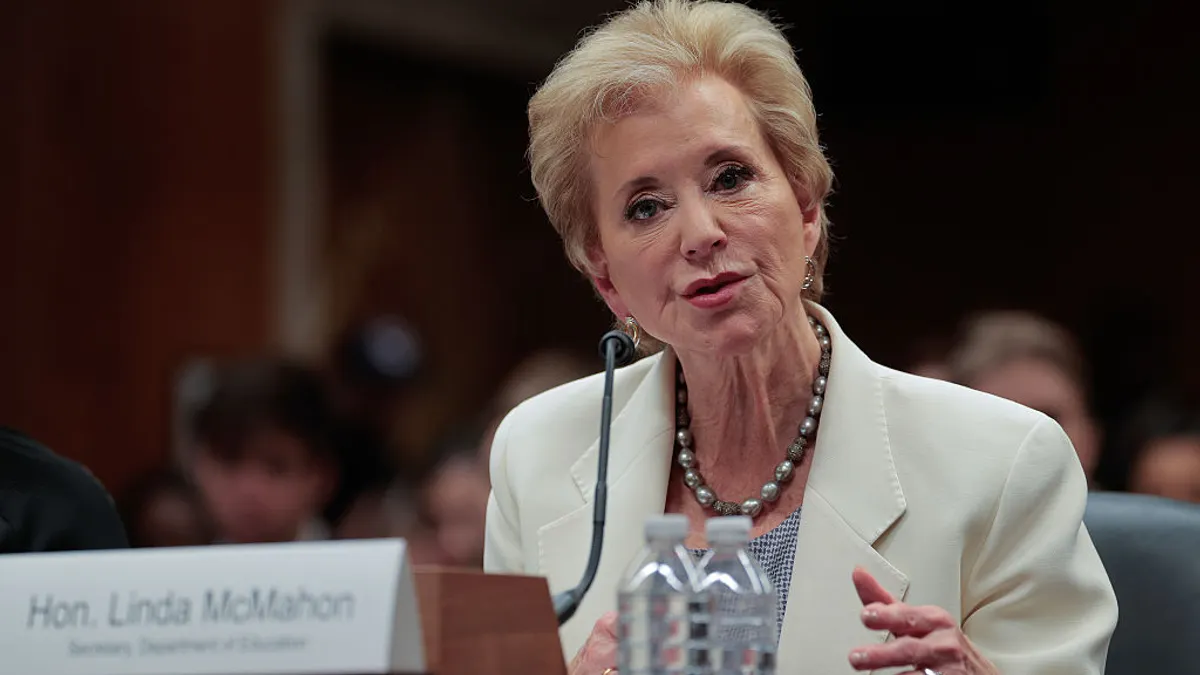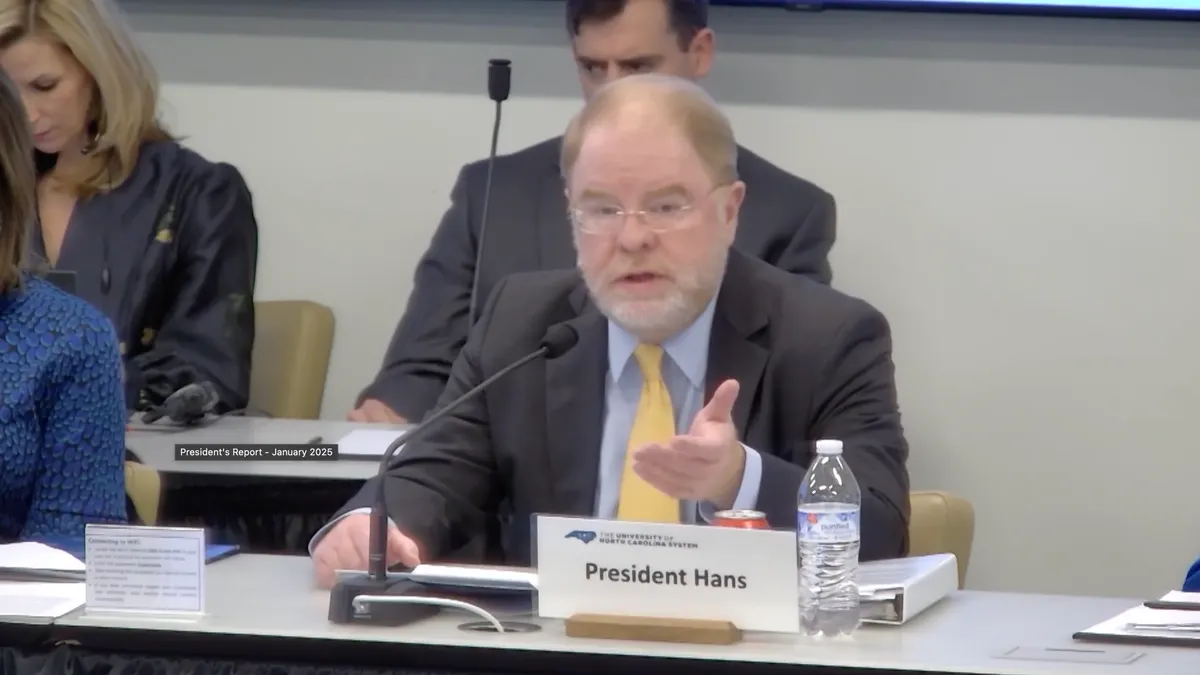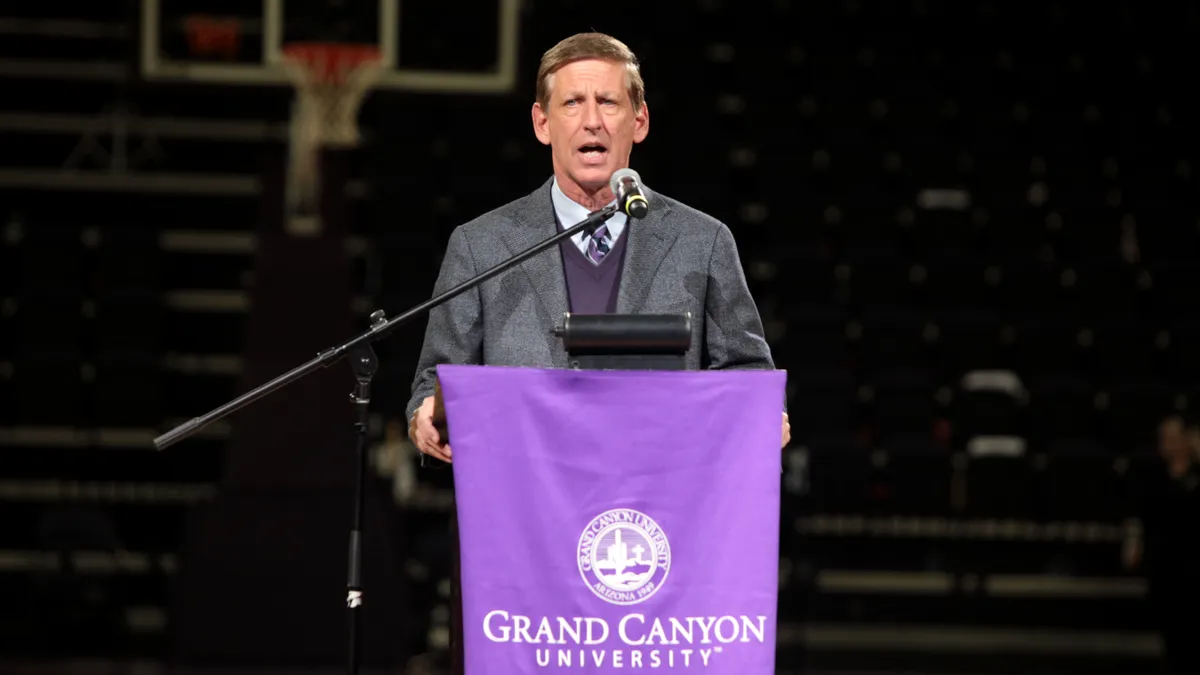E. Gordon Gee, the professorial president of West Virginia University who favors bow ties and once described himself as "quirky as hell," pauses for a moment and sighs when asked whether he thinks it's possible to improve the fractured relationship between fraternities and colleges across the country.
Although he may seem like their antithesis, and his response to their misbehavior on his campus has been by most accounts no-nonsense, he says he's optimistic.
"They are going to continue to play a role, and it could be a positive one. So rather than ignore them and put them aside, let's find a way to make them cheerful, friendly and engaged members of the university community," says Gee, who recently banned five fraternities for 10 or more years after they refused to obey new rules he implemented following reports of hazing and drug and alcohol abuse.
He's not the only college leader of late to crack down on fraternities for misconduct. This fall, the University of Iowa and Monmouth University suspended theirs, and other institutions such as the University of Nebraska, Northwestern University, the University of Arizona and the University of Connecticut have taken similar actions in recent years.
Disparate views about the future of fraternities have included suggestions they be disbanded or even unbridled and self-governed. Yet Gee and others seem adamant that fraternities have a place in higher education, though they agree a solution to the present issues is needed now. The most recent catalyst: four student deaths as a result of hazing activity in 2017 alone. The spate followed a near half-century period during which at least one hazing death was recorded per year, according to Franklin College Professor Hank Nuwer, who has gained attention for his meticulous tracking of incidents.
College leaders and others say those solutions include stricter limits for fraternities around pledging and alcohol use, higher levels of direct supervision, more stringent state laws and better tactics for getting fraternities to self-police, the latter led more forcefully by their national and campus organizations.
But fraternities' long histories at their universities and deep ties within alumni networks makes cracking down a major challenge.
A shifting tide
The problem, says Nicholas Syrett, a professor at the University of Kansas and author of "The Company He Keeps: A History of White College Fraternities," stems from the deeply rooted traditions intrinsic to fraternities and the heavy doses of male bonding that go along with them.
"Many young men arrive on campus very much hoping that their college experience will involve excessive drinking at fraternity parties. They want what they think of as the classic fraternity experience, complete with parties, pledging and hazing," Syrett says. "The men who most fit that ideal even before getting to college join fraternities and they encourage one another to continue the tradition. It's a bit like a self-fulfilling prophecy."
Under that broader umbrella, loose-knit "rogue" groups that "act with impunity" challenge colleges and universities that often feel they don't have sufficient tools to monitor or oversee them, says Paul Zingg, former president of California State University, Chico, where the hazing death of 21-year-old Matthew Carrington in 2005 prompted the formation of the nonprofit Anti-Hazing Awareness (AHA!) Movement, founded by Carrington's mother Debbie Smith.
"Greek misbehavior takes place on most campuses," Zingg says. Efforts such as that by AHA!, which Zingg supports, hope to change that. Its work resulted in the passage of Matt's Law in California, which allows for felony prosecutions and broader law enforcement powers for hazing.
Smith isn't the only parent pushing back, and that pressure is spurring colleges and universities to step up. Following Penn State University sophomore Timothy Piazza's death in 2017 as a result of injuries sustained during a night of drinking at a fraternity event, the university became a center of activity related to fraternity safety.
Piazza's parents were active in pushing for greater oversight of fraternities, and Penn State President Eric Barron clamped down the groups on his campus and began collaborating with the presidents of other universities where hazing-related deaths had occurred recently to find solutions.
Their efforts were also critical to recently passed legislation in Pennsylvania, which strengthens penalties for hazing and makes it a felony if it results in serious injury or death. Pennsylvania is the 12th state with such a law on its books. The bill was promoted by an energetic, newly formed coalition of affected parents and fraternities and anti-hazing groups, which will soon release a set of proposed state laws they intend to advance nationwide. As with Matt's Law, the one in Pennsylvania is named after Piazza.
Raising accountability on campus
In addition to changing the law, affected colleges, families and other groups are looking within the institution. Some colleges have established firm rules about alcohol consumption on campus, have moved troublesome freshman pledge activities to the spring or eliminated them entirely, and more quickly suspend offending fraternities, says John Hechinger, a senior editor at Bloomberg News and author of the book "True Gentlemen: The Broken Pledge of America's Fraternities," which looks at fraternity culture and their future on campuses. Others require members meet certain academic performance or community service requirements.
"Information travels faster, the events are better documented and it's harder for them to be swept under the rug," Hechinger says. "Colleges have had to respond."
This past April, Barron co-led a meeting of more than 30 college officials to examine challenges, complications and ways to collaborate on new approaches. One of those approaches is a national scorecard, which Penn State developed for its campus to keep track of outcomes for fraternities such as GPA, community service hours and violations pertaining to hazing, alcohol or sexual assault.
"We now have inserted ourselves into the lives of these students in ways never done at Penn State, and rarely, if ever, done in any large public university," says Damon Sims, the university's vice president for student affairs. He says Penn State staff is now on-hand at social activities and handles the discipline of members who violate behavior policies.
"They are going to continue to play a role, and it could be a positive one. So rather than ignore them and put them aside, let's find a way to make them cheerful, friendly and engaged members of the university community."

E. Gordon Gee
President, West Virginia University
Scorecards or publication of fraternity records on alcohol-related hospitalizations could be powerful tools for colleges, Hechinger says, along with potentially "taxing" participants at campus events where alcohol is served or requiring parents to buy large liability insurance policies so they have a financial incentive to reduce risky behavior.
Douglas Fierberg, an attorney representing families in fraternity misconduct cases, says to control behavior universities must be more transparent about fraternity problems. He says even heralded disclosure efforts like Penn State's are too vague and that universities too often protect the groups. He also says the common chapter self-management model should be replaced with university oversight, pledging should be banned and alcohol consumption should be prohibited without proper adult supervision.
"Fraternities are knowingly isolated from meaningful adult management and supervision and are therefore unreasonably dangerous," he says.
Is better oversight possible?
College leaders have successful lessons from the past to call upon. Hechinger notes in his book that soon after former University of Rhode Island President David Carothers was hired in 1991 he found the university had gained an unwanted reputation for its social life. Kegs were seen at commencement, the institution's initials URI became synonymous with "you are high," and many students were regularly hospitalized for alcohol poisoning.
Carothers took what Hechinger says proved to be effective action: banning alcohol from all university-sponsored social events on campus, suspending students for two semesters if they violated the policy and kicking out repeatedly offending fraternities — even bulldozing some houses or taking them over as administrative buildings. The action, Hechinger wrote, "all but eliminated the kind of tragic alcohol-related deaths that had been a regular occurrence," improved behavior generally and drew more successful students to the university.
It also didn't result in the backlash that Carothers expected and many administrators fear when they restrict fraternities, which are quick and aggressive in their own defense and often have powerful support.
"Colleges have shown a lot more backbone and shut down chapters, and parents have put pressure on colleges and states to do something, but without powerful and sustained pressure, some fraternities aren't likely to change," says Hechinger. He and others note that fraternity members are often held up as leaders on campus, their presence is a recruiting tool and they have strong connections to important donors and community leaders.
Zingg and others stress that fraternities' leadership at the chapter and national levels should be held more accountable for members' behavior and its consequences.
"Colleges have shown a lot more backbone and shut down chapters, and parents have put pressure on colleges and states to do something, but without powerful and sustained pressure, some fraternities aren't likely to change."

John Hechinger
Journalist and author
Some have stepped up, establishing firm standards for their groups about consent, alcohol abuse and hazing. For example, the 66-member North-American Interfraternity Conference joined the coalition that is seeking tighter state laws on hazing and has banned hard liquor at the facilities of its participating fraternities beginning next fall. The move affects more than 6,100 chapters on 800 college campuses.
Hechinger's book tracks several leaders who have against the odds sought to clean up their chapters. Gee says strong leaders and thoughtful university student affairs professionals were critical when he was at chancellor at Vanderbilt University from 2000 to 2007, where 35% of men were in fraternities in 2010 and where, he said, there was more cooperation between the university and Greek organizations.
Selecting the right people in those positions and training them on how to avoid problems is key, he says, particularly fraternity leaders. A clear institutional policy is critical, fraternities must be informed about it and have reasonable say in its formation, and the policy must be enforced.
"They have to step up and take responsibility for the behavior of their members, and they will," Gee says. "They and their members have to be held accountable if they don't."
Correction: This article has been updated to correct that Timothy Piazza was a sophomore at Penn State.


















